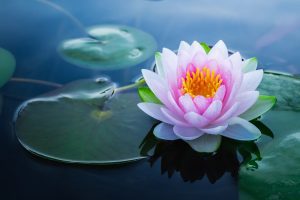
I Want Someone to Build Me a Pond: Key Considerations for Your Project
I Want Someone to Build Me a Pond: Key Considerations for Your Project
Building a pond can transform an ordinary garden into a tranquil retreat. Those interested in having a pond built often contemplate what it entails, including design, size, and maintenance. Understanding the pond cost is crucial, as it can vary greatly depending on factors such as size, type, and features. Finding a reliable contractor who specialises in pond installations is crucial to ensuring the project meets expectations and thrives in the long run.
Pond construction involves several steps, including planning, excavation, and landscaping. When planning a beautiful koi pond, it is essential to address legal and safety measures, such as obtaining permits and understanding local regulations. Considering the desired size, shape, and features such as water plants or fish is also important. Engaging with professionals allows for tailored solutions that enhance the garden while addressing practical aspects like waterproofing and filtration.
Ultimately, investing in a professionally built pond can provide both aesthetic and ecological benefits. It encourages biodiversity and creates a serene environment for relaxation and enjoyment. With the right guidance and vision, achieving the dream of a personal pond is entirely possible.
Understanding Pond Basics
Ponds can vary greatly in type, purpose, and size. Whether you are considering a small pond for a compact garden or a wildlife pond to support local fauna, understanding the basics is essential. Knowing the essential aspects is important when considering building one. Maintaining pond water quality and ecosystem balance is crucial for the health of the pond. This section covers the types of ponds, their benefits, ideal locations for placement, and size and depth considerations.
Types of Ponds: Koi Pond
Ponds can be categorised into several types based on their purpose. Ornamental ponds are primarily for aesthetic value, often featuring plants and decorative elements. Wildlife ponds are designed to support local fauna, providing habitats for amphibians and insects. Koi ponds specifically cater to koi fish, requiring careful design for proper water quality and depth. Natural ponds, which form through geological processes, can also be maintained for ecological benefits. Understanding the intended use will guide the design and maintenance choices for the pond.
Benefits of Having a Pond with Aquatic Plants
The advantages of having a pond extend beyond mere aesthetics. Ponds enhance biodiversity, attracting various wildlife and plant species. They can serve as a natural water source for local animals, maintaining a balanced ecosystem. Additionally, ponds contribute to landscape beauty, increasing property value. Building your own koi pond can create a peaceful and attractive backyard oasis, offering both aesthetic benefits and potential cost savings. They offer recreational opportunities, such as fishing or birdwatching, creating a serene retreat. The soothing sounds of water can improve mental wellbeing, providing a peaceful atmosphere for relaxation.
Ideal Locations for Ponds and Pond Water Quality
Choosing the right location for a pond is critical for its success. It is essential to avoid areas with heavy tree cover to minimise debris falling into the water. Ideally, a site that receives direct sunlight for a portion of the day promotes healthy plant growth. Proximity to water lines and electricity can simplify maintenance and access. Using a garden hose to trace the shape of the pond can help in planning the layout effectively. Additionally, a garden hose is useful for filling the pond with water, ensuring you consider water quality for a healthy environment for pond inhabitants. While rainwater is preferable for filling a pond, tap water can be used if allowed to stand for a week to let chlorine evaporate. Checking the slope of the land is important; a slight incline can help with drainage and avoid flooding. Furthermore, consider local regulations and any necessary permits before establishing a pond.
Size, Depth, and Pond Liners Considerations
The size and depth of a pond directly impact its ecological balance and maintenance. Using a flexible butyl liner is crucial for adapting to various pond shapes and sizes. A minimum depth of 60 cm is recommended to prevent water freezing in winter, ensuring aquatic life survives seasonal changes. Properly establishing the pond edge by marking it with pegs and ensuring the liner overlaps adequately is essential for preventing leaks. Larger ponds typically create a more stable environment, but they also require more maintenance. Incorporating a layer of coarse gravel is essential for creating a stable base for larger rocks and supporting beneficial bacteria, which play a crucial role in maintaining the pond’s ecosystem. The proportion of shallow and deep areas is crucial; shallow zones support plant growth and habitat, while deeper areas provide refuge for fish. Planning the pond size should account for intended use, surrounding landscape, and available space, ensuring a harmonious fit with the environment.
Planning and Preparation
Determine the Purpose of Your Pond
Before embarking on the journey of building a koi pond, it’s crucial to define the purpose of your pond. Are you envisioning a peaceful and serene backyard oasis, or are you passionate about raising koi fish for their beauty and tranquility? Perhaps your goal is to create a thriving habitat for various aquatic plants and animals. Whatever your vision, understanding the primary purpose of your pond will guide every aspect of its design and construction.
A well-planned koi pond not only enhances the aesthetic appeal of your garden but also ensures a healthy and thriving ecosystem for your koi fish and other aquatic life. For instance, if your primary focus is on koi fish, you’ll need to consider specific requirements such as water quality, depth, and filtration systems. On the other hand, if you’re aiming to support a diverse range of aquatic plants and animals, you’ll need to create a balanced environment that caters to their needs.
By clearly defining the purpose of your pond from the outset, you can make informed decisions that will lead to a successful and sustainable project.
Budgeting and Cost Considerations
When planning to build a garden pond, it’s essential to consider the budget and cost implications. The cost of building a pond can vary greatly depending on the size, type, and features of the pond. On average, a small garden pond can cost between £500 to £2,100, while a medium-sized pond can cost between £1,500 to £3,000. A large pond or a luxury pond with water features and landscaping can cost upwards of £6,000.
It’s also important to consider the cost of maintenance and upkeep, including the cost of pond liners, pumps, and filtration systems. Additionally, if you plan to add fish or other aquatic life to your pond, you’ll need to factor in the cost of food, equipment, and veterinary care.
To budget effectively, it’s recommended to break down the costs into different categories, such as:
Pond liner and underlay: £500-£1,000
Pump and filtration system: £200-£500
Electrical installations: £500-£1,000
Water features: £500-£1,000
Aquatic plants: £100-£500
Fish and equipment: £500-£1,000
Maintenance and upkeep: £500-£1,000 per year
By considering these costs and budgeting accordingly, you can create a beautiful and functional garden pond that meets your needs and enhances your outdoor space.
Design and Layout
Pond Depth and Dimensions
When designing your koi pond, one of the most critical factors to consider is the depth and dimensions of the pond. A well-designed pond should have a minimum depth of 3-4 feet. This depth is essential for maintaining cool water temperatures during hot seasons and preventing the pond from freezing in winter, which is vital for the health and survival of your koi fish.
In terms of dimensions, a koi pond should ideally be at least 12 feet long and 10 feet wide. This size provides ample space for your koi fish to swim and thrive, promoting their overall well-being. Additionally, a larger pond helps maintain a stable water temperature and reduces the risk of toxin buildup, creating a healthier environment for your fish.
By carefully planning the depth and dimensions of your koi pond, you can ensure a stable and supportive habitat for your koi fish, contributing to their longevity and vitality.
Choosing Your Pond Plants
Choosing the right pond plants is crucial for creating a thriving and balanced ecosystem in your garden pond. There are many different types of pond plants to choose from, including aquatic plants, marginal plants, and deep-water plants.
Aquatic plants, such as water lilies and cattails, are perfect for adding color and texture to your pond. Marginal plants, such as irises and rushes, are great for creating a natural-looking edge around your pond. Deep-water plants, such as hornwort and anacharis, are ideal for providing shelter and food for fish and other aquatic life.
When choosing pond plants, consider the following factors:
Climate and weather conditions
Water depth and temperature
pH levels and water chemistry
Sunlight and shade
Maintenance and upkeep requirements
Some popular pond plants for small garden ponds include:
Water forget-me-not
Brooklime
Hornwort
Water lilies
Cattails
For larger ponds or farm ponds, consider adding plants such as:
Reeds
Rushes
Irises



